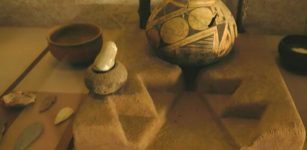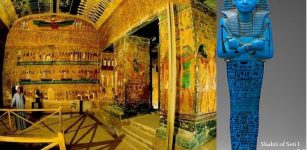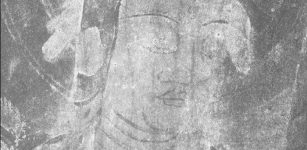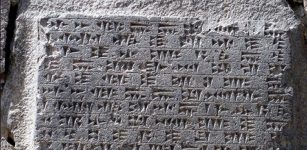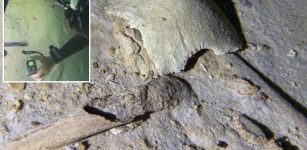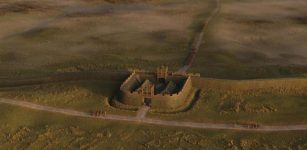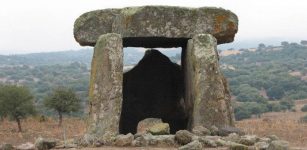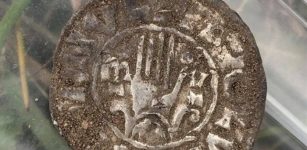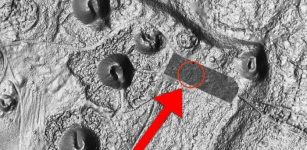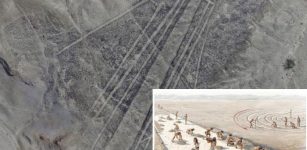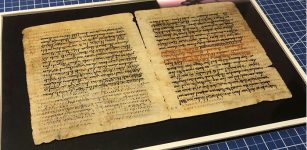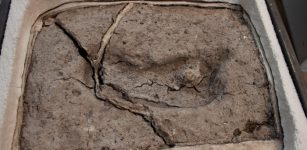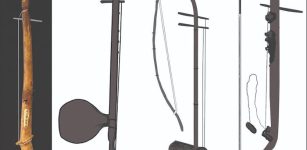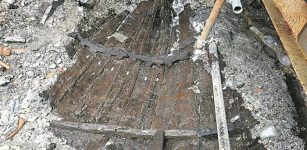Rare Bulla (Seal) And 2,600-Year-Old Stamp With Biblical Name Unearthed In City Of David
Conny Waters - AncientPages.com - A rare bulla (seal impression) and a 2,600-year-old stamp bearing Hebrew names were uncovered in the City of David inside a public building that was destroyed during the destruction of the First Temple.
The discovery was made while archaeologists excavated the Givati Parking Lot in the City of David National Park in Jerusalem.
The Natan-Melech Eved Hamelech bulla found in the City of David. Copyright: Eliyahu Yanai, City of David
Bullae were small pieces of clay impressed by personal seals, used in ancient times to sign letters. While the parchment they sealed didn’t survive the destruction of ancient Jerusalem, the bullae, which are made of ceramic-like material, were preserved, leaving evidence of the correspondence and those behind them.
Private stamps were used to sign documents, and were often set in signet rings carried by their owners. They referred to the identity, lineage and status of their owners.
The artifacts were found inside a large public building that was destroyed in the sixth century BC – likely during the Babylonian destruction of Jerusalem in 586 BC, according to Prof. Yuval Gadot of Tel Aviv University and Dr. Yiftah Shalev of the IAA, who were responsible for the excavations.
Givati Parking Lot Excavations in the City of David, where the discoveries were made. Photo credit: Kobi Harati
The script on the bulla and stamp helped researchers to date the finds to to the middle of the seventh century to the beginning of the sixth century BC.
The seal impression, dated to the First Temple period, features the words: “(belonging) to Nathan-Melech, Servant of the King” (LeNathan-Melech Eved HaMelech). The name Nathan-Melech appears once in the Bible, in the second book of Kings 23:11, where he is described as an official in the court of King Josiah, who took part in the religious reform that the king was implementing:
“And he took away the horses that the kings of Judah had given to the sun, at the entrance of the house of the Lord, by the chamber of Nathan-Melech the officer, which was in the precincts; and he burned the chariots of the sun with fire.”
The seal engraved with the name - “(belonging) to Ikar son of Matanyahu. Photo: Eliyahu Yanai, City of David.
The title “Servant of the King” (Eved HaMelech) appears often in the Bible to describe a high-ranking official close to the king. This title appears on other stamps and seal impressions that were found in the past. This seal impression is the first archaeological evidence of the Biblical name Nathan-Melech.
Another stamp-seal, made of bluish agate stone and engraved with the phrase “[belonging to] Ikar son of Matanyahu” (LeIkar Ben Matanyahu) was discovered the same location.
“The name Matanyahu appears both in the Bible and on additional stamps and bullae already unearthed. However, this is the first reference to the name ‘Ikar,’ which was unknown until today,” Dr. Anat Mendel-Geberovich of the Hebrew University of Jerusalem and the Center for the Study of Ancient Jerusalem, said.
“These artifacts attest to the highly developed system of administration in the Kingdom of Judah and add considerable information to our understanding of the economic status of Jerusalem and its administrative system during the First Temple period, as well as personal information about the king’s closest officials and administrators who lived and worked in the city,” Gadot and Shalev say.
Written by Conny Waters – AncientPages.com Staff Writer




